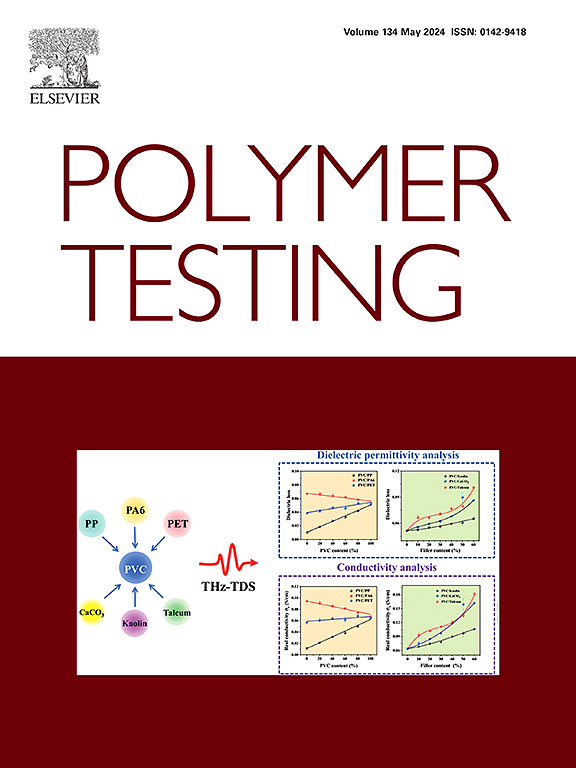Influence of thermoplastic polyurethane (TPU) and printing parameters on the thermal and mechanical performance of polylactic acid (PLA) / thermoplastic polyurethane (TPU) polymer
IF 5
2区 材料科学
Q1 MATERIALS SCIENCE, CHARACTERIZATION & TESTING
引用次数: 0
Abstract
Polylactic acid (PLA) is a polymer widely used for 3D printing process owing to its mechanical properties which are high strength and flexural modulus and environmentally friendly. However, PLA is also a brittle polymer with low impact resistance. This weakness can be compensated by combining PLA with other polymer like Thermoplastic polyurethane (TPU) that is widely used to improve mechanical properties of PLA. In polymer 3D printing process, printing parameters affect the thermo-mechanical properties of the printed products. This study investigates the influence of TPU and various printing parameters on thermal and mechanical properties of PLA/TPU polymer blends. It provides more precise understanding on how each printing parameters and different TPU ratio affect the mechanical and thermal properties. It also helps in determining the significant parameters for better PLA/TPU blend print. This exploration of parameter effects adds novel insights, enhancing applicability in practical 3D printing processes. Six different TPU ratio was used which are 10 %–50 % by weight while the parameters being tested are printing speed, raster angle, layer thickness and printing temperature. The differential scanning calorimetry (DSC) and thermogravimetric analysis (TGA) were conducted to assess the thermal properties while a tensile test was conducted to evaluate the mechanical properties. ANOVA analysis was employed for the data analysis. It was found that TPU altered the thermal properties of PLA by reducing the cold crystallization temperature, Tcc, enthalpy of crystallization, ΔHc and enthalpy of melting, ΔHm. The mechanical strength reduced by 64 % but the ductility improved up to 900 %. Based on ANOVA analysis, it can be concluded that influence of printing parameters on the mechanical properties are layer thickness > printing speed > raster angle > printing temperature in descending order.

求助全文
约1分钟内获得全文
求助全文
来源期刊

Polymer Testing
工程技术-材料科学:表征与测试
CiteScore
10.70
自引率
5.90%
发文量
328
审稿时长
44 days
期刊介绍:
Polymer Testing focuses on the testing, analysis and characterization of polymer materials, including both synthetic and natural or biobased polymers. Novel testing methods and the testing of novel polymeric materials in bulk, solution and dispersion is covered. In addition, we welcome the submission of the testing of polymeric materials for a wide range of applications and industrial products as well as nanoscale characterization.
The scope includes but is not limited to the following main topics:
Novel testing methods and Chemical analysis
• mechanical, thermal, electrical, chemical, imaging, spectroscopy, scattering and rheology
Physical properties and behaviour of novel polymer systems
• nanoscale properties, morphology, transport properties
Degradation and recycling of polymeric materials when combined with novel testing or characterization methods
• degradation, biodegradation, ageing and fire retardancy
Modelling and Simulation work will be only considered when it is linked to new or previously published experimental results.
 求助内容:
求助内容: 应助结果提醒方式:
应助结果提醒方式:


